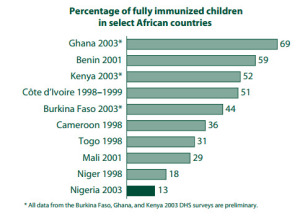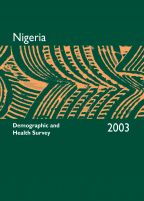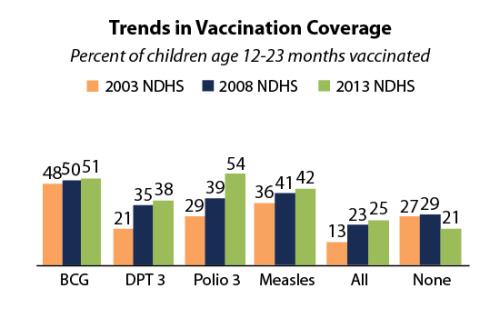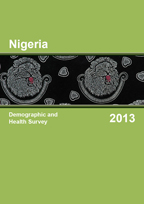Celebrating 30 years of DHS
2014 marks the 30th anniversary for the USAID-funded Demographic and Health Surveys Program and my eleventh anniversary as Senior Advisor for Communication with the project. Much has changed over the past three decades: we’ve done many more surveys and much more complex surveys, added biomarkers, conducted more formal capacity building, and varied the kind of dissemination products and activities. What hasn’t changed is how much people all over the world value the DHS.
When I joined The DHS Program—then MEASURE DHS—in 2003, I was a devoted DHS user, relying on surveys for background information to inform behavior change communication programs. But I knew very little about how national governments and development partners used the surveys. It was my first trip for the project that gave me a whole new perspective on the impact of DHS findings.
I went to Abuja, Nigeria for the launch of the 2003 Nigeria DHS Final Report. More than 500 people crammed into the Sheraton Hotel Conference Centre designed to hold only about 350. The morning session included opening prayers, introductory speeches by four government ministers, the USAID Mission Director, the head of the National Population Commission, the Chief Economic Advisor to the President, and more. Finally, we got to the data—a short key findings presentation of the survey results highlighting childhood vaccination rates from Nigeria and from DHS surveys in other African countries (see chart below).

Percentage of children who received all basic vaccinations in select African countries from the 2003 Nigeria DHS Key Findings
At the time, only 13% of Nigerian children had been fully vaccinated, putting Nigeria dead last in Africa. When this statistic was presented, all 500 participants in the audience sat in shocked silence. The data told the story, and the Nigerians were not happy to be so far behind their smaller and much poorer neighbors. The DHS results were a critical factor prompting Nigerian leaders to focus on improving national immunization programs. While still not impressive, vaccination coverage for Nigerian children has doubled since 2003, reaching 25% in the 2013 DHS.
I heard another example of the impact of the 2003 Nigeria DHS during my trip. The survey found that only 12% of households owned mosquito nets. As a result, a DFID-funded Society of Family Health project decided to increase malaria prevention activities and add insecticide treated nets to its roster of social marketing products. For both the national government, private sector, and development partners, the DHS made the difference.
I’m immensely proud to introduce this blog series, which will highlight many different stories of DHS over the years. In the coming weeks, you will hear from DHS leaders over the years, including Sunita Kishor, Martin Vaessen, Trevor Croft, Guillermo Rojas, Fred Arnold, and Annie Cross, on topics ranging from gender & women’s issues in the DHS to nutrition in India, Data Processing and collection methods to experiences from the first DHS in Liberia. I hope this series unlocks some of DHS history for you, our users. Here’s to 30 years of DHS!




